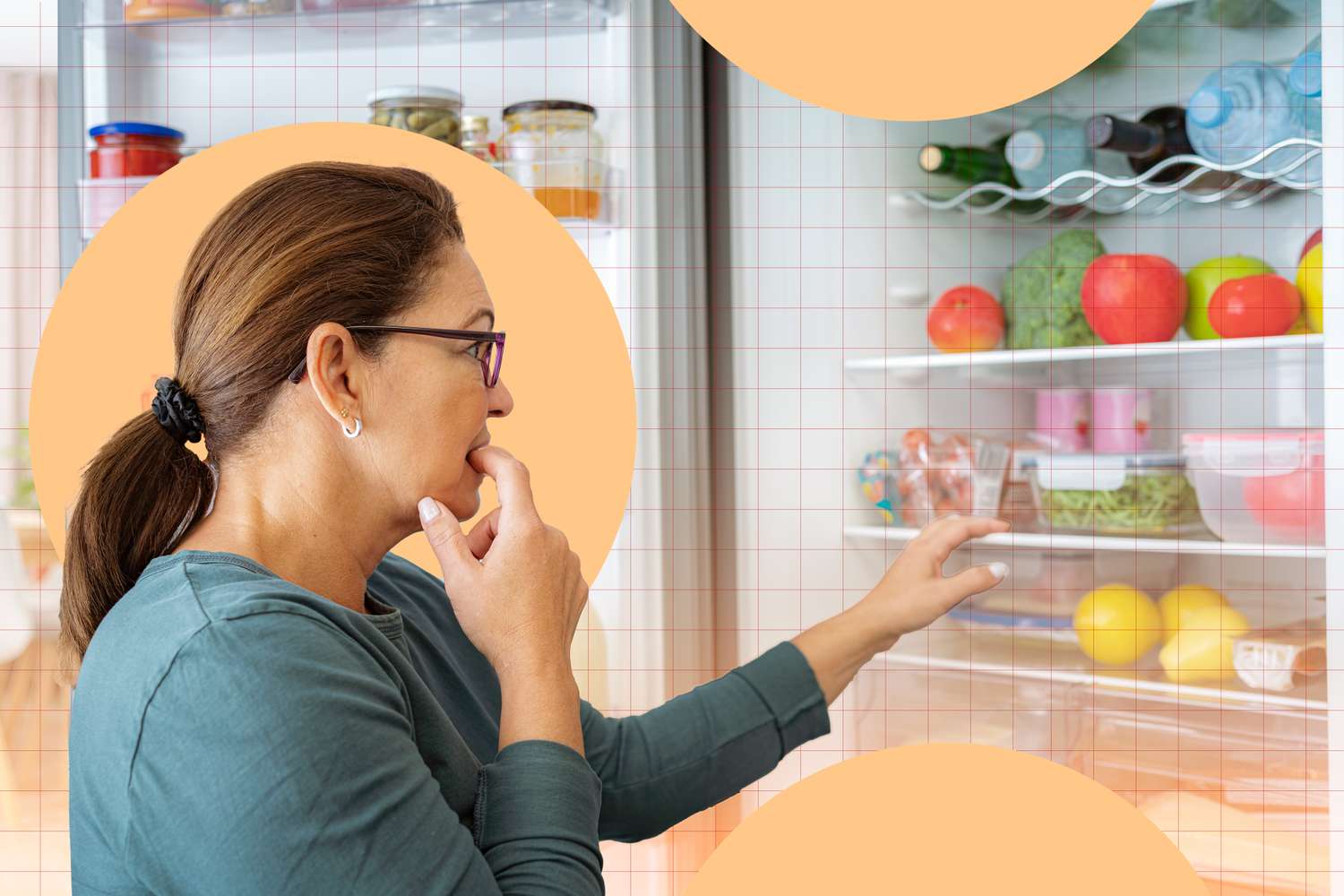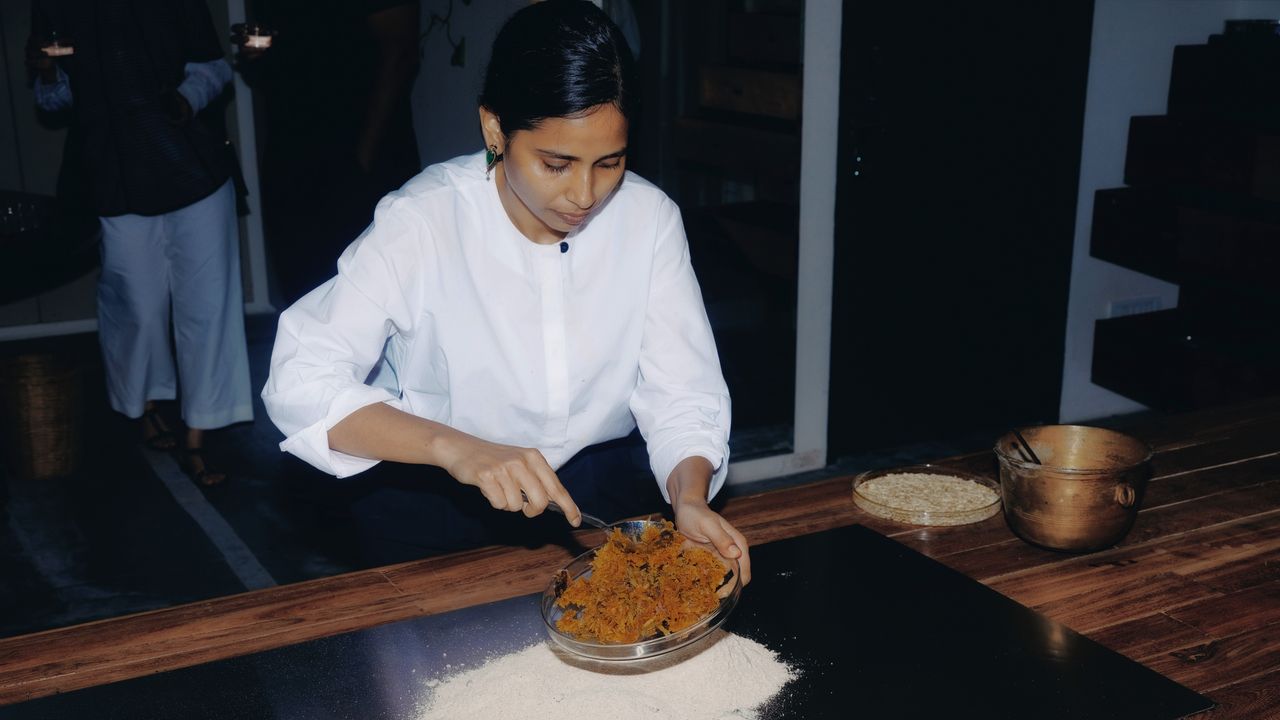Blog
This Simple Fridge Fix Can Help You Avoid Food Poisoning

- Where you put your groceries matters because poor fridge organization can lead to food safety risks.
- Because the juices can leak and spread bacteria, raw meat should always go on the bottom shelf.
- Cold air sinks, so store milk, eggs and fruits on the lower shelves to keep them fresh longer.
Putting groceries away in the refrigerator can feel like playing a game of Tetris, especially if you’re working with a small space. While simply sticking foods wherever they fit may seem like the easiest and quickest way to get the job done, a food safety expert says this can potentially put you at risk of foodborne illness, as well as causing food waste. In other words, storing food on the wrong shelves might be the food storage mistake you didn’t even know you were making.
The Expert-Recommended Way to Organize Your Fridge
Most refrigerators have designated spaces that are designed to help you with organizing, including door storage for condiments and crisper drawers for produce, but the wide-open shelves are often misconstrued as a free-for-all space when they’re really meant for storing particular foods.
“One of the easiest food storage mistakes to make at home is poor fridge organization,” says Sara Bratager, senior food safety and traceability scientist at IFT’s Global Food Traceability Center. “Many people simply put groceries wherever there’s space, but that can lead to serious food safety risks. That said, smart fridge organization can help maintain the quality and shelf-life of your food.”
1. Store Raw Meats on the Bottom Shelf
It’s unlikely that you’ll need to reorganize your entire fridge to avoid foodborne illness, since Bratager says there are only two key organizational rules to remember: store raw meats below ready-to-eat items and keep your refrigerator’s temperature at or below 40°F. “Raw meat, poultry and seafood should always be stored on the bottom shelf—never above ready-to-eat foods,” says Bratager. “That’s because raw juices can drip down and contaminate other items with harmful bacteria like Salmonella or E. coli.”
This raw meat storage tip is particularly important to follow if your refrigerator has wire shelves, as liquids can easily fall through them. Still, most glass refrigerator shelves are not leak-proof, which means that liquids can seep between the glass and the frame and drip down to the lower shelves.
2. Stable Foods Go on the Top Shelf
The warmest place in most refrigerators is typically the top shelf, so that’s where Bratager recommends storing more stable foods, like pickled foods and yogurts, since fermented foods have an acidic environment that can help inhibit bacterial growth leading to spoilage and potential illness. However, refrigerators with an ice-making compartment at the top tend to have colder top shelves, making that area ideal for storing perishable items.
3. Perishables Belong on the Coldest Shelves
Because cold air is dense and tends to sink, the middle and bottom shelves of refrigerators are almost always going to be the coldest. “The middle shelves are ideal for more perishable items like milk, eggs and produce, especially if you don’t have designated crisper drawers,” says Bratager. She reiterates that raw meats belong on the bottom shelf, not only to prevent cross-contamination but also to keep them out of the “danger zone”—temperatures above 40°F and below 140°F, which the U.S. Department of Agriculture states can cause rapid bacterial growth.
Expert Tips for Avoiding Foodborne Illness
EatingWell tapped the food safety expert for additional tips that can help home cooks avoid foodborne illness beyond the fridge, during handling and storing. Here’s what Bratager said:
- Keep it clean. Always wash your hands, cooking utensils and cooking surfaces before and after handling food. Also, don’t forget to rinse fresh produce before cutting or eating—it helps remove dirt and bacteria from the surface.
- Separate raw from ready-to-eat. Raw meat, poultry and seafood should be kept separate from other foods, both in the fridge and during prep. Use separate cutting boards, plates and utensils to avoid spreading harmful bacteria.
- Cook to the right temperature. Use a food thermometer to make sure you’re cooking foods to a safe internal temperature. The USDA Safe Minimum Internal Temperature Chart is a great resource to check before you start cooking.
- Cool leftovers quickly. Don’t let leftovers sit out—get them in the fridge within 2 hours. If it’s a hot day (above 90°F), that window shrinks to just 1 hour.
- Stay out of the temperature “danger zone.” Bacteria grow fastest between 40°F and 140°F. Some bacteria can double in just 20 minutes, so it’s important to keep cold foods cold and hot foods hot. If you’re serving food buffet-style or for a party, use slow cookers for hot items, and nest cold items in ice to keep them chilled.
Our Expert Take
Keeping an organized refrigerator is essential in avoiding foodborne illness, as well as food waste. A food safety expert explains that raw meats should always be stored on the bottom shelf to prevent their liquids from dripping down onto other foods; that perishables belong on the coldest shelf to prevent spoilage and bacterial growth; and that more stable foods can go on the top, and often warmest, shelf. Because food safety doesn’t end there, the expert also offered tips for handling and storing leftovers, including why it’s important to maintain clean work surfaces and utensils, as well as why leftovers need to be cooled and refrigerated quickly.












